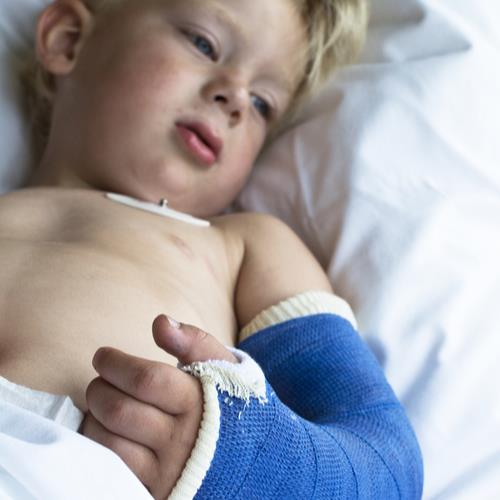09 July 2020
 In a new UniSA study published in the leading international journal, Child Abuse and Neglect, UniSA researchers have found that by their mid-teens, children who were the subject of child protective services contact, are up to 52 per cent more likely to be hospitalised, for a range of problems, the most frequent being mental illness, toxic effects of drugs and physical injuries.
In a new UniSA study published in the leading international journal, Child Abuse and Neglect, UniSA researchers have found that by their mid-teens, children who were the subject of child protective services contact, are up to 52 per cent more likely to be hospitalised, for a range of problems, the most frequent being mental illness, toxic effects of drugs and physical injuries.
The world-first study examined the impact of child abuse and neglect from data covering 608,540 South Australian born children since1986.
Lead author and Research Fellow at UniSA, Dr Emmanuel Gnanamanickam says the research underlines the long-term impacts of child abuse and neglect and the importance of protecting children from an early age to prevent ongoing health problems.
“The research shows that, the system is identifying children who are at risk, but there is not enough happening to support these children and their families early and as they enter adulthood,” Dr Gnanamanickam says.
The research found that by the age of 16.5 years, children who had at some time been placed in Out of Home Care (OOHC) had an average of 7.7 hospital admissions, about four times the mean of 2.0 for children who had never had contact with CPS.
And the impact continues beyond adolescence.
People aged between 15 and 32 years, who have had contact with CPS in their childhood, had two to four times more hospitalisations than those with no contact. Children with substantiated child abuse or neglect and had entered OOHC, were shown to be at the highest risk.
“The study indicates that there are long-term health and mental health consequences for children experiencing abuse and neglect and that those impacts are felt even by children whose cases are not elevated by the child protection system,” Dr Gnanamanickam says.
“Rates of hospitalisation for children who are placed in out of home care, because these cases are the most serious, are highest, and further research is required to unpack how the elements of abuse and neglect interact with removal from family, to ensure the negative outcomes for these children can be mitigated as far as possible.
And the lead investigator of the iCAN (impacts of child abuse and neglect) project, Professor Leonie Segal says the key take home message from the research is that better access to high quality infant, child and adolescent mental health services must be a critical part of any effective intervention strategy.
“Differences in hospitalisation start in infancy, highlighting the need to pursue opportunities for preventing child maltreatment and protecting children from harm from an early age,” Prof Segal says..
“Clearly more needs to be done to support troubled families and this is something that requires an integrated approach that would see child protection working with the wider human services sector to ensure that effective, cross-agency strategies are available from early in life.
“Not only is there an ethical imperative to improve the health and wellbeing of our most vulnerable children across the life course, doing better to address child maltreatment and prevent associated harms, presents a considerable hospitalisation prevention opportunity.”
Contacts for interview:
Lead author: Dr Emmanuel Gnanamanickam email: emmanuel.gnanamanickam@unisa.edu.au, mobile: 0430 870 336, twitter: @EmmanuelSum1
Project Lead: Professor Leonie Segal email: leonie.segal@unisa.edu.au, mobile: 0418 300 805
Media contact: Michèle Nardelli email: michele.nardelli@unisa.edu.au mobile 0418 823 673
Follow us on Twitter @universitySA




